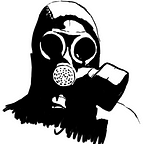Psychopathy
A look at Psychopathy from another angle
Psychopathy (/saɪˈkɒpəθi/) (or sociopathy /ˈsoʊsiəˌpæθi/) is traditionally defined as a personality disorder characterized by enduring antisocial behavior, diminished empathy and remorse, and disinhibited or bold behavior. It may also be defined as a continuous aspect of personality, representing scores on different personality dimensions found throughout the population in varying combinations. The definition of psychopathy has varied significantly throughout the history of the concept; different definitions continue to be used that are only partly overlapping and sometimes appear contradictory.
Hervey M. Cleckley, an American psychiatrist, probably influenced the initial diagnostic criteria for antisocial personality reaction/disturbance in the Diagnostic and Statistical Manual of Mental Disorders (DSM), as did American psychologist George E. Partridge. The DSM and International Classification of Diseases (ICD) subsequently introduced the diagnoses of antisocial personality disorder (ASPD) and dissocial personality disorder, stating that these have been referred to (or include what is referred to) as psychopathy or sociopathy. Canadian psychologist Robert D. Hare later repopularised the construct of psychopathy in criminology with hisPsychopathy Checklist.
Although no psychiatric or psychological organization has sanctioned a diagnosis titled “psychopathy”, assessments of psychopathic characteristics are widely used in criminal justice settings in some nations, and may have important consequences for individuals. The term is also used by the general public, in popular press, and in fictional portrayals.
